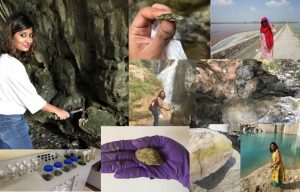ForumIAS announcing GS Foundation Program for UPSC CSE 2025-26 from 27th May. Click Here for more information.
Source– This post “Green Alga(P. salinarum)-Spotted first time in India” is based on the article “Inspire Faculty fellow decodes molecular mechanism behind intriguing green alga surviving in extreme conditions like saline-soda lakes” published in “PIB” on 14 November 2023.
Why in the News?
A young researcher has divulged the secret of how one of the smallest green algae called Picocystis Salinarum survives the harshest of conditions.
What is this new Alga?
1. P. salinarum(one of the smallest green algae) found in hypersaline soda lake Sambhar, Rajasthan, survive extreme environments.
2. Though the alga had been widely found in saline-soda lakes around the world, it was spotted for the first time in India only in the Sambhar Lake.
3. Picocystis salinarum cells under normal conditions have a spherical or oval shape(size ranges from 2 to 3μm).
4. The cell wall is mainly composed of polymers of the monosaccharide arabinose, polyarabinose.
What are the Key findings of the Study?

1. Molecular mechanisms of adaptation– Through studying the changes in protein abundances.
2. The unique organism apparently enhances photosynthesis and ATP (type of nucleic acid) synthesis along with chaperone proteins (proteins that assist the conformational folding or unfolding of large proteins) as key response to high salinity-alkalinity.
3. Photosynthetic activity- Enhanced photosynthetic activity exhibited by P. salinarum in highly saline-alkaline condition is noteworthy as photosynthesis is suppressed under hyperosmotic conditions in most photosynthetic organisms.
4. Biotechnological applications– Study shows P. salinarum as a promising candidate for biotechnological applications like microalgal bioproducts and increasing salt tolerance in plants.
5. Study also shows it as a model organism for deciphering the molecular mechanisms of osmotic adaptation.
6. It also revealed the unique characteristics of this microalga for bicarbonate-based integrated carbon capture and biomass production.
UPSC Syllabus- Science & Technology




